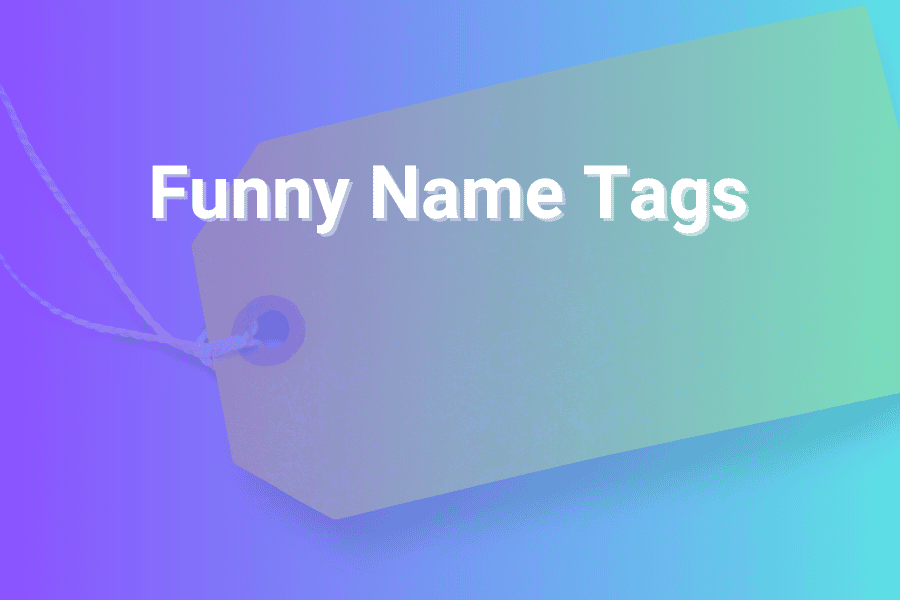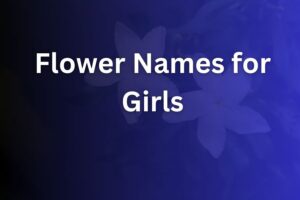Laughter lowers social costs. When someone grins at a tag, they approach faster and talk longer. The tag becomes a tiny script for the first line. That quick spark matters at scale. Even a small lift per encounter multiplies across a room. You get more cross-table mingling, shorter awkward silences, and warmer follow-ups. The effect compounds for shy guests, new hires, and first-time attendees.
Humor also signals culture. A team that jokes together feels safer sharing rough ideas. At events, smart tags telegraph the vibe before the keynote starts. Done right, you set tone without a long speech.
Recent Signals That Interest Is Real
People still hunt for fresh tag ideas. A mainstream list of 250 funny usernames kept circulating since 2023 because play-on-words never dies. A popular gallery of “unfortunate” real-world tags still earns shares because near-misses feel human.
One ranked roundup of “funniest name tags” logged hundreds of votes in 2025 and continued to climb. Even casual inspiration hubs show steady searches for “funny name tags” in the last few days. Takeaway: humor formats stay evergreen, and the audience remains ready.
The Psychology Behind a Great Tag
Humor works when it stays simple, specific, and safe. Simple means quick decoding from six feet away. Specific means the line fits the person or context. Safe means it never punches down.
Use these levers: surprise, specificity, and status warmth. A tiny zig in wording (“Head of Snacks” instead of “Office Manager”) signals play. A personal hobby line (“Weekend Guitar Hero”) gives someone the perfect opener. A warmth cue (“New Here—Say Hi”) invites contact while making the host look generous.
Core Formats That Always Hit
Keep formats modular, so you can scale across teams and events.
- Role-with-a-Wink
First line: name. Second line: role parody that hints at real work.
Examples: “Jasmine — Spreadsheet Whisperer,” “Miguel — Chief Bug Detective,” “Nina — Queue Tamer.” - The Icebreaker Prompt
Name on top. Beneath: one-line prompt that people can ask about.
Examples: “Ask me about pizza crust,” “I collect tiny plants,” “I solved level 147.” - The Punny Badge
Keep puns clean and short. Let the font do the heavy lifting.
Examples: “Ctrl Alt Delight,” “Captain Obvious(ly Helpful),” “Brewed Awakening (Barista).” - The Status Slider
These guide how to approach.
Examples: “I’m New—Please Say Hi,” “Talk to Me About Hiring,” “First Conference—Be Kind.” - The Meme Nudge
Use a common joke, but localize it.
Examples: “Hello, I’m the ‘It Depends’ Person,” “Coffee: My Co-Founder,” “World’s Okayest Project Manager.”
Rules of Readability You Should Never Break
Prioritize scannability. People read tags from standing distance, often while moving. Use a minimum 24-point font for the name, 14–18 for the line beneath. Avoid light gray on white. Go high-contrast: navy, forest green, deep purple, or black on white. Keep the line length under 40 characters. Uppercase looks bold, but Title Case reads faster. Include line breaks to stop crowding.
Material matters. Matte finishes reduce glare under bright lights. Rounded corners snag less on clothing. Pin-backs hold tight on jackets; magnets protect blazers and dresses. Provide both when you can.
Tone: Fun, Not Feral
Fun tags welcome people in. Feral tags lock them out. Check every line for three risks: punching down, private jokes, and double meanings. Retail floors and family events feel different than a comedy club. Jokes about names, accents, or body parts fail the vibe check. Play with roles, objects, and harmless exaggeration.
Workplace Use Cases That Pay Off
Onboarding: Issue a “New Here—Ask Me Anything” variant for the first week. Pair it with a colored lanyard that telegraphs support. New hires gather five times more helpful chats when the tag does the asking.
All-hands and offsites: Print role-wink tags in departments’ palette colors. The colors help people spot functions for quick collaboration.
Customer-facing teams: Use seasonal scripts that fit brand voice. “Returns Therapist,” “Snack Replenishment CTO,” “Chief Smile Operator.” Short, warm, and on message.
Internal fairs and demos: Add QR codes on the lower right that link to a one-pager, a slide demo, or a calendar slot. Keep the code contrast strong and the quiet zone clean. People scan more when they laugh first.
Event Playbook for Conferences and Meetups
Pre-event survey: Ask registrants to pick a prompt line from a shortlist or write their own within a character limit. This creates buy-in and filters low-taste entries.
Print tiers: Basic stickers for walk-ins. Premium card tags for speakers, sponsors, and staff. Make the premium ones a little playful and a lot legible.
Flow cues: Add discreet symbols in the corner to route conversation. A tiny mic for speakers, a handshake for sponsors, a spark for “looking for collaborators.”
Refill station: Put a tag-making table near coffee, with markers, blank inserts, and a mini guide showing five safe formats. People hack their tag while they wait in line.
Weddings, Parties, and Reunions
Weddings love inside jokes that stay clean. Keep grandparents in mind. Use “How I Know The Couple” lines: “College Friend,” “Work Teammate,” “Neighbor,” “Cousin Who Dances.” Add a prompt like “Ask about the canoe story.” People bond faster across circles.
Birthday parties and reunions benefit from time-capsule gags. “Class Prank Consultant,” “Yearbook Poet,” “Mixtape Curator.” Print a few blank backups for last-minute arrivals.
Kids’ parties need bigger fonts and sticker stock that peels clean from clothing. Keep humor visual: icons, doodles, and simple rhymes.
Retail and Hospitality
Name tags set tone the second a guest enters. A barista with “Espresso Diplomat” disarms complaints. A grocery associate with “Aisle 7 Cartographer” nudges helpfulness. Keep a basket of seasonal alternates so staff can rotate lines and avoid joke fatigue.
If your brand voice skews premium, lean subtle: “Client Care,” “Table Whisperer,” “Wine Guide.” Let typography carry the sophistication. If your brand runs playful, turn the dial: “Chief Fry Guy,” “Burrito Architect,” “Merch Wizard.”
Classrooms and Camps
Tags reduce social friction quickly. Middle schoolers approach peers more when the tag suggests a safe topic. Use prompt lines like “I read fantasy,” “I code in Scratch,” or “Ask me about my pet.” For camps, weather-proof laminated tags with bold first names make counselors’ jobs easier without shouting.
Copywriting: Short Lines That Stick
You do not need a pun every time. You need clarity with a twist.
Start with a noun of craft, not a title. Swap “Manager” for a vivid object or action. “Queue Tamer,” “Bug Detective,” “Roadmap Translator.” Add a modifier that earns the smile. “Chief,” “Resident,” “Night-Shift,” “Part-Time.”
Template to reuse:
Name (big)
Short role wink or prompt (one line)
Optional tiny symbol or QR (corner)
Design Details That Make You Look Pro
Color: Pair a bold color for the name with a neutral for the joke line. Keep contrast strong. Avoid novelty fonts for the name. Use one expressive font for the second line if legible at 14–18 point.
Spacing: Give the name generous letter-spacing if it’s all caps. Keep 4–6 mm padding around edges. The micro-white-space makes cheap stock look elevated.
Layout: Left-align text for readability. Centering looks cute on screen but wobbles in the hallway. If you must center, increase line height.
Icons: One tiny icon next to the second line adds recognition. Coffee cup, wrench, light bulb, book. Don’t clutter.
Materials: For multi-day events, print on 30-mil PVC or sturdy cardstock with laminating sleeves. For single nights, premium matte sticker sheets feel better than thin gloss.
Print and Production Cheat Sheet
Batch printing: Export to PDF with crop marks and a 0.125″ bleed if you go edge-to-edge. Use CMYK for print houses. For in-house, stick with sRGB but test one sheet before committing.
Sticker sheets: Lay out a 3×8 grid for standard A4/Letter sticker paper. Lock margins. Run a test to check alignment drift.
Magnet vs pin: Offer both. Many attendees wear fabrics that magnets protect. Pins still hold better on thick outerwear.
Reprints on site: Keep a label printer and blank inserts ready for walk-ins. Put a quick guide nearby with three safe formats and character limits.
Scaling Humor Without Losing Taste
Centralize the rules. Share a short style guide: no slurs, no politics, no health or body jokes, no personal attacks, no innuendo that a teenager would flag. Give two reviewers final say for events over 100 people. Keep veto power light but firm.
Rotate joke families by quarter or season: coffee, weather, travel, music, productivity. People tire slower when the themes change.
Invite bottom-up lines. Staff and attendees write better jokes for their own roles. Feature the best ones on an internal board.
Measuring What Works
You can track more than laughs. Watch dwell time near registration. Count scanning of QR codes on tags. Track repeat introductions across teams after an offsite. Survey one day later with three questions: Did your tag start a conversation? Do you remember two new names? Would you wear a version of this again? Look for upward movement over consecutive events.
Recent interest hints help here. Fresh voting and search activity around funny tags show live demand for new ideas, not just nostalgia. Use that momentum to test batches each month.
Accessibility and Inclusion
Readable type helps everyone. Use dyslexia-friendly fonts or well-spaced sans-serif. Avoid tiny script fonts. Provide blank options for people who want only their name. Offer pronoun stickers that match your DEI guidelines. Keep color contrast high for low-vision guests. Place Braille dots only if you can maintain quality; smudged dots frustrate more than they help.
Compliance and Safety
For healthcare and certain public-facing roles, skip jokes that could confuse authority or scope of practice. “Chief Surgeon of Snacks” might sound cute, but context matters. For minors, keep full names optional. For high-security sites, integrate the humor line while leaving barcodes, holograms, or photo areas untouched. Train staff to replace damaged tags immediately.
A Fast Library of Ready-to-Use Lines
For offices: “Roadmap Translator,” “Meeting Escape Artist,” “Spreadsheet Whisperer,” “Scope Guard,” “Bug Detective,” “Deadline Wrangler.”
For retail/hospitality: “Smile Starter,” “Aisle Navigator,” “Order Alchemist,” “Table Whisperer,” “Return Therapist,” “Burrito Architect.”
For events: “Ask About My Demo,” “Hiring—Say Hi,” “New Here—Be Kind,” “First Timer—Point Me,” “Sponsor Whisperer,” “Coffee Saves Me.”
For schools: “Ask About Dinosaurs,” “STEM Explorer,” “Library Ranger,” “Art Studio Regular,” “Band Practice Survivor,” “Recess Strategist.”
For weddings/reunions: “Canoe Story Witness,” “Dancefloor Risk Taker,” “Met the Groom at HR,” “Bride’s Cousin—Good With Photos,” “Mixtape Curator,” “Toast Draft Editor.”
How to Launch in One Week
Day 1: Pick three formats and write fifteen example lines that fit your voice.
Day 2: Test print on plain paper; check legibility at six feet.
Day 3: Survey attendees or staff to choose their favorite lines or submit their own within limits.
Day 4: Finalize typography, colors, and materials.
Day 5: Batch print and pack a live edit kit: markers, blanks, sleeves, clips, magnets.
Day 6: Train greeters to offer a quick tag-writing script.
Day 7: Run the event or rollout, capture photos, track QR scans, and collect micro-feedback the next morning.
Future-Proofing Your Tag System
Make tag creation a ritual, not a scramble. Keep a living doc of approved lines. Add a seasonal theme each quarter. Tie tags to your content calendar: product launches, campaigns, or community drives. Use small metrics—scan rates, introductions recalled, opt-in photos—to steer the next batch. Refresh the lineup every four to six weeks so jokes feel crisp, not canned. Humor ages fast; your system should not.
Closing Thought
A good name tag starts a story that people want to finish in conversation. Keep it short, legible, and kind. Then let the room do the rest.










